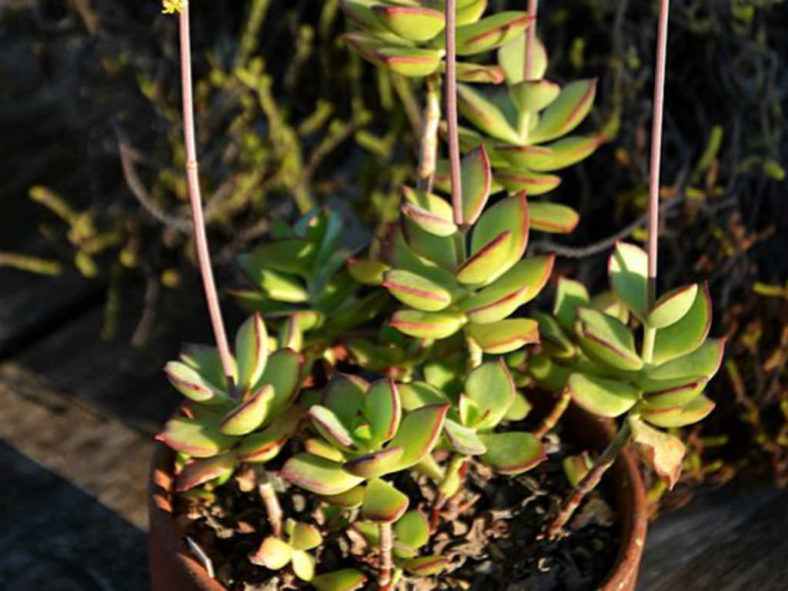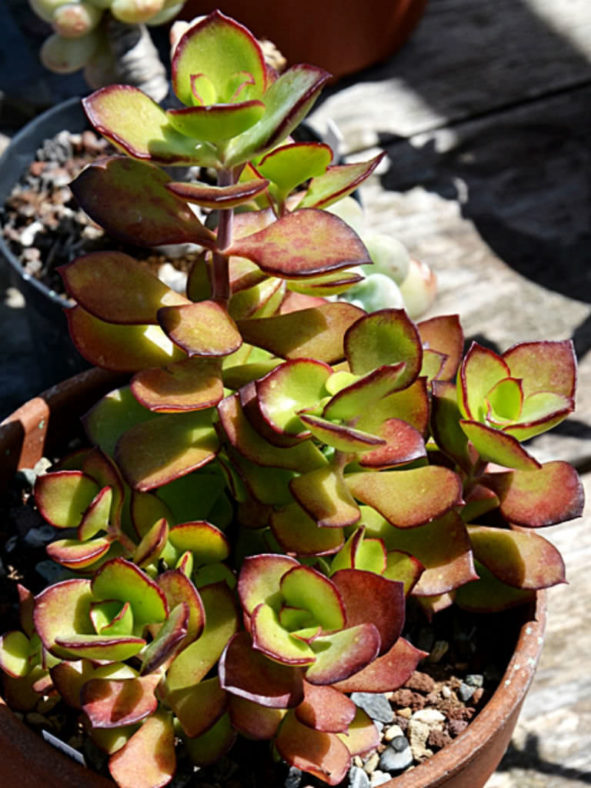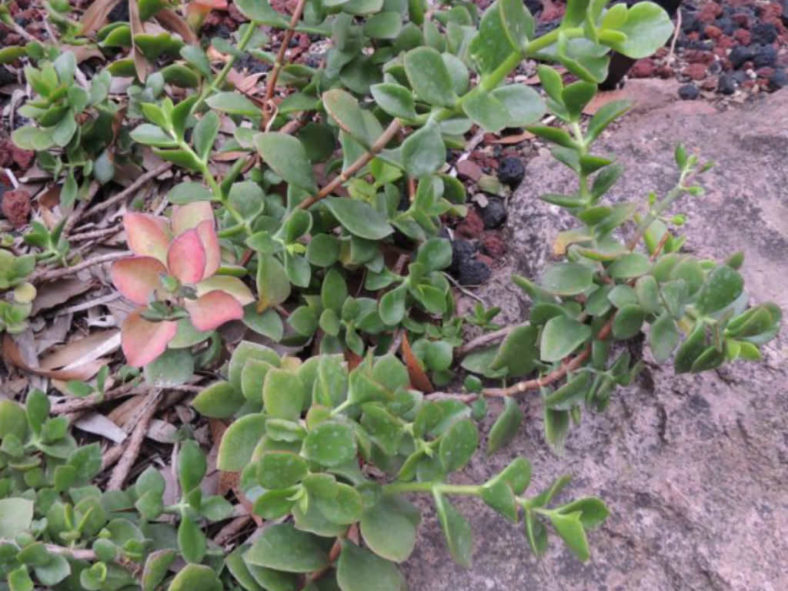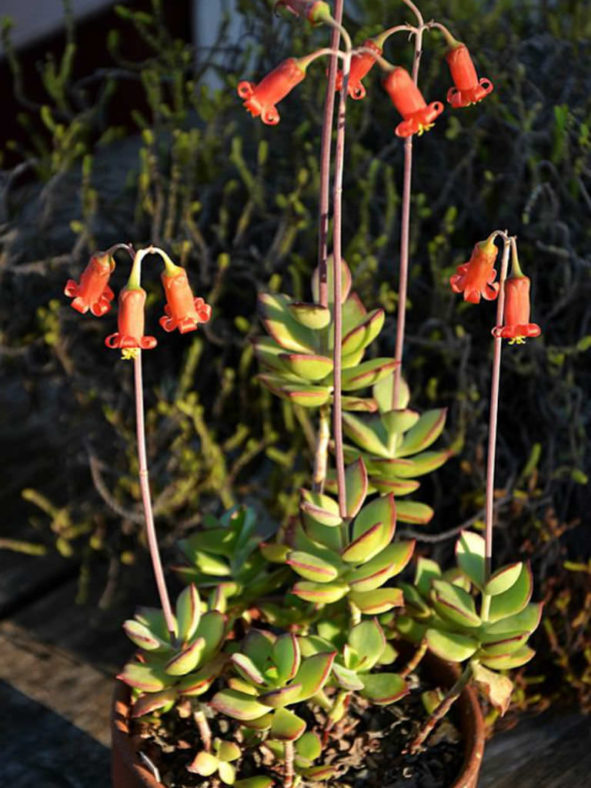Scientific Name
Cotyledon adscendens R. A. Dyer
Scientific Classification
Family: Crassulaceae
Subfamily: Kalanchoideae
Genus: Cotyledon
Etymology
The specific epithet "adscendens" (pronounced "ad-SEN-denz") means "ascending, rising" and refers to the growing habit of the branches of this species.
Origin
Cotyledon adscendens is native to South Africa (Eastern Cape). It grows in dune thickets.
Description
Cotyledon adscendens is a sparingly branched succulent with erect to spreading branches that bear green leaves with reddish margins in the upper half. It can grow up to 5.2 feet (1.6 m) tall. The leaves are flat, obovate to spatulate, and slightly concave, measuring up to 2.4 inches (6 cm) long and 1.1 inches (2.8 cm) wide.
The orange-red flowers are tubular, reaching 1 inch (2.5 cm) in length and 0.4 inches (1 cm) in diameter. They appear in summer in a cluster on a stalk that can grow up to 14.4 inches (36 cm) long.

How to Grow and Care for Cotyledon adscendens
Hardiness: USDA hardiness zone 10a to 11b: from 30°F (-1.1°C) to 50°F (10°C).
Cotyledons can be divided into two groups. One group consists of evergreen plants with a summer growing period. The other group comprises deciduous plants, splendidly magnificent with large, solid, fleshy stems. The second group grows during winter and sheds its leaves in summer.
These succulents require a free-draining, gritty mix and plenty of sunlight. They tolerate cool, frost-free conditions during the winter if kept dry. Some require pruning to maintain an attractive shape. Cotyledons should be kept in a sunny position. Follow general succulent watering procedures. Be careful not to overwater when they are deciduous.
As succulents go, Cotyledons certainly are rewarding garden and indoor subjects, practically independent of irrigation in all but full desert conditions. However, they cannot survive in poor light or in wet soil with inadequate drainage.
Feed it once or twice during the growing season with a fertilizer specifically formulated for cacti and succulents (poor in nitrogen), including all micronutrients and trace elements diluted to 1/2 the strength recommended on the label.
Learn more at How to Grow and Care for Cotyledon.
Links
- Back to genus Cotyledon
- Succupedia: Browse succulents by Scientific Name, Common Name, Genus, Family, USDA Hardiness Zone, Origin, or cacti by Genus
Photo Gallery
Click on a photo to see a larger version.


